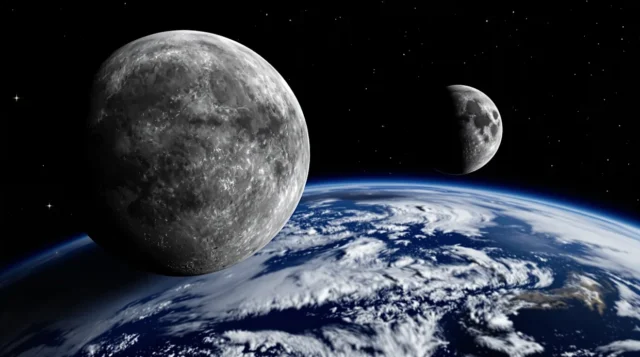NASA has confirmed the discovery of a new “quasi-moon” orbiting in sync with Earth — a rare celestial companion that shadows our planet as it circles the Sun.
The space agency announced this week that the rock, named 2025 PN7, was first detected by researchers at the University of Hawaii during a telescope survey earlier this year.
At first, it appeared as a faint moving speck against the stars. But after weeks of observation, scientists confirmed it was following a near-identical orbit to Earth — not a true moon, but a steady cosmic partner keeping pace with our planet.
Measuring between 18 and 36 metres wide, the asteroid is about the height of a small building — tiny by space standards but significant enough to earn a spot in Earth’s extended neighbourhood.
Unlike the Moon, which is bound to Earth by gravity, 2025 PN7 isn’t tethered. Astronomers liken it to “a friendly runner keeping your pace on the same track — close enough to notice, but never touching.”
Researchers believe the object has been accompanying Earth for around 60 years, and if its orbit remains stable, it will continue doing so until 2083, before drifting away into deeper space.
At its nearest, the quasi-moon comes within 4 million kilometres, about ten times the distance between Earth and the Moon, and can drift as far as 17 million kilometres away.
NASA says only eight quasi-moons have ever been confirmed, each providing valuable insight into how Earth’s gravity shapes nearby space and influences asteroid movement.
Beyond scientific curiosity, such objects may one day serve as practical testing grounds for future missions — close, stable, and far easier to reach than distant asteroids.
No, 2025 PN7 won’t replace the Moon — but it’s there, quietly keeping us company as Earth continues its endless lap around the Sun.
Discover more from TheTimes Nigeria
Subscribe to get the latest posts sent to your email.










